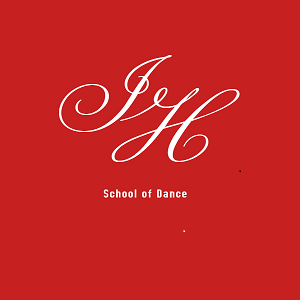The History of Wedding Dance
- Inga Haas School of Dance

- May 13
- 3 min read
Updated: Jul 30
Celebrating love through dance has been a cherished tradition in weddings for centuries. In the days of Kings and Queens the First Dance was used to open a ball or a special event. This special occasion was led by the guest of honour, typically someone very high on the social ladder or someone of royalty. The First Dance was the grand opening for the ball. From the grand ballrooms of European aristocracy to intimate backyard gatherings, the wedding dance has taken many forms, each with beautiful cultural significance. Let’s explore the magical origins of wedding dances and how they have evolved over time.
The History of Wedding Dance
The origins of wedding dance can be traced back to ancient civilizations, where couples would perform ceremonies involving music and movement to celebrate their union. In ancient Rome, couples danced not only to celebrate but also to ward off evil spirits. These gatherings often included lively music played by musicians, creating a festive atmosphere.
During medieval times in Europe, wedding dances symbolized the newlyweds' first steps together as a married couple, often featuring communal dances that involved family and friends. For instance, the “Bridal Procession,” a ritual dance that often followed the ceremony, marked the couple’s entry into married life.
As societies evolved, styles and purposes behind wedding dances also changed. In many cultures, the couple's first dance became an opportunity to showcase their love and commitment. This became particularly popular during the Renaissance, where elaborate courtly dances were performed at noble weddings. One notable example is the "Galliard," which required skill and agility and captivated onlookers, setting the tone for the celebration.
The 19th Century and the Introduction of the Waltz
The waltz emerged as a prominent wedding dance in the early 19th century. Originating in Austria, this dance highlighted intimacy between couples, contrasting sharply with previous dances that involved larger circles and more participants. By the late 1800s, the waltz had become a staple at weddings across Europe and the Americas, with around 70% of weddings incorporating it during this time.
The elegance of the waltz marked a transition from group dances to couple-focused ones, emphasizing emotional connection. This period laid the groundwork for modern wedding dances, steering the focus toward individual expression and the couple's unique bond.
The 20th Century: A Melting Pot of Styles
As the 20th century progressed, wedding dances began to diversify dramatically. Genres like jazz, swing, and rock-and-roll introduced playful movements, transforming the dance floor into a lively space where couples could express their joy. It was common to find couples letting loose to classics like “Sing, Sing, Sing” or Elvis Presley hits.
This era saw the rise of the bride and groom's first dance as a cherished tradition. Couples began choosing songs that felt personal, making their dance a true reflection of their love story. Statistics reveal that approximately 84% of couples today prioritize this moment, with many opting for choreographed performances that entertain guests.
Present Day: Tradition Meets Modernity
Today, wedding dances have evolved to encompass a vast array of styles from various cultures worldwide. Whether it's the traditional Hora at a Jewish wedding, often emphasizing community and celebration, or the Butterfly dance from Polynesian cultures that symbolizes joy and love, couples can choose any style that resonates with them.
Many couples now add fun elements like flash mobs or dance-offs, making the dancing portion even more enjoyable for guests. This trend reflects a growing desire to create memorable experiences; for example, some couples have viral dance videos with millions of views online. Social media has become a platform for sharing and inspiring others, encouraging creativity on their special day.
Cherishing the Dance of Love
The history of wedding dance beautifully reflects love, cultural diversity, and creativity. As we celebrate weddings around the globe, we can appreciate the rich heritage behind these dances, honoring those who danced before us. Whether it’s a classic waltz or a modern flash mob, every wedding dance tells a unique story, making these moments truly unforgettable. So, next time you find yourself on a wedding dance floor, remember the centuries of tradition behind your moves. Dance like it’s a celebration of love!









Comments